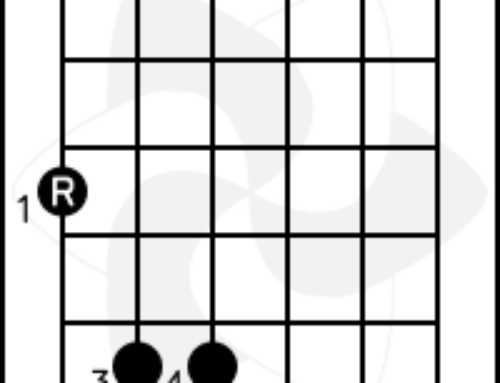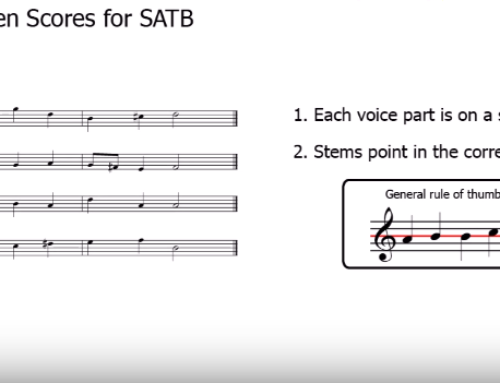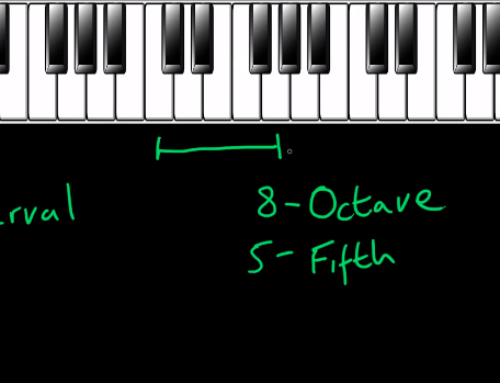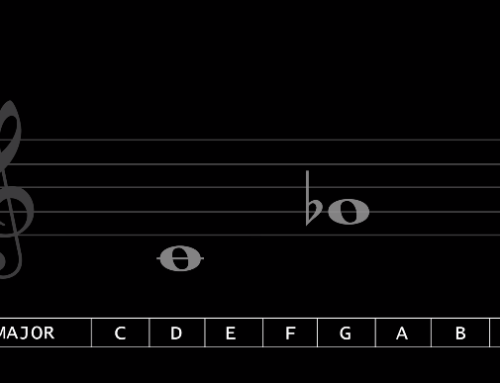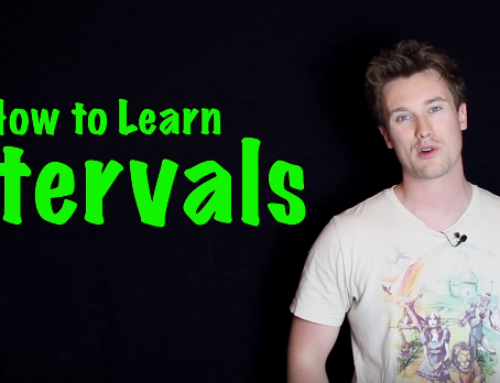The Major Scale Formula Lesson 1 Music Theory
Video text transcript below may be inaccurate in some areas due to software
0:08
Alright, Candace Russell here doing our first week of music theory.
0:13
In this 12 week series, going over the basics of contemporary music theory, we’re going to start right here with learning the major scale formula. And we’re going to use the, the keyboard here, I know that some of you might be guitar players, or other different instruments. But the keyboard is the, the best ways best place for for us to start, because it’s laid out so well for us.
0:35
So right now, we’re just going to it really quickly. If you don’t know, your, your, your, your,
0:41
the keyboard, you need to memorize it, and get it down really well. I’m going to just go ahead and, and right out here, the the white notes
0:52
all right out a little bit of it. Here
0:55
she is.
0:57
Alright, that gives you a kind of an idea of, of the of the wind notes here. And these black notes in between here are sharps and flats, this is C sharp, and or D flat. Okay, this is D sharp and E flat, so on and so forth. This be a sharp or B flat.
1:11
So
1:12
what do I mean by the major scale formula? Well, every everything that that’s played has, every key that you’re in has a major scale that it’s basically based off of. So whenever you’re, whenever you’re playing in a key, you’re basically playing off of a scale. And if you’re playing a major key, or you’re playing off of the major scale. So if you’re in the key of C, the notes that you’re generally hitting our C, D, E, F,
1:35
G, A, B, and then seek, okay, and these are all white notes,
1:39
these are all the the naturals, okay. And if you’re playing in G, they’re almost just all the naturals G, A, B, C, D, E, F sharp, and then G. Now it goes on in two different ones. You know, the A has three sharps that he has, for sharps the app has one flat and memorizing those can be kind of kind of dumb task. And so this is like the, the basic step of how to understand the, the major scale is to learn the major scale formula. Okay. And so basically what it is, if we were to look at it
2:14
from here, the major scale formula, if we were to translate these, let’s just take the key of C, or now we’re gonna go 1234567, I’m gonna put eight and or one because sometimes we’re going to think of it as an octave. Sometimes we’re going to think of it as the next one starting over. So if we look at that, if we’re looking at our numbers, 12345678 and or one putting the letter names, C, D, E, F, G, A, B, C, this is a formula of whole steps and half steps, okay, so from the one to the two
2:56
we’re going to look at as a whole step
3:00
means whole
3:03
age means half.
3:07
Alright, so we’re going to host up a whole step half that a whole step, a whole step, a whole step
3:17
that half that back to the 801. Okay, now, what is a whole step and a half step, a whole step is basically just going well, let’s go back, a half step is going one note to the note next to it. Okay, it’s as simple as this. If you look at it on the keyboard, it’d be really easy. Instead of I’m going to play a note instead of down here, I’m gonna play it right here.
3:37
So how to play this d
3:39
a half step up is just the note
3:42
right next to it, okay, to play this see have stepped up is the road night that right next to it. C sharp, okay,
3:49
so generally speaking, if you’re going up, you’re going sharps for going down, you’re going flat. So this is C sharp, and D flat. It’s called in harmonic, which means the same note or, but two different names. And so two names, one note is an harmonic, okay, so for the most case, I’m most of these, they’re pretty easy, you know, you think, Okay, see you to C sharp, D, two D sharp as the F sharp gene, G sharp, a sharp, but then you’ve got these two problem areas right in here that don’t have a black note, or sharp or flat in between it. So you’ve got that he there’s no blackout in between here. So it for for all intents and purposes, for contemporary music theory, there’s no such thing as an E sharp, there is such thing as a sharp but for way we’re thinking about it, there isn’t. So there is no such thing as an E sharp,
4:37
it’s just an app is no such thing as an F flat, it’s just an E, same thing goes for the B and C. So you got you know, there’s no be sharp, it would just be a seat for for for most, you know, purposes that there were having yet further into theory, there are technically is such thing as like a C flat, but we’re just not going to deal with that right now. So this whole this formula of the whole whole half. Whoa, whoa, whoa, half we can apply to the seat. So if we’re going to see, okay, a whole step is going
5:08
up to half steps, okay. So,
5:10
it makes me which makes sense half would be half of a whole. So,
5:15
we have seen half
5:17
step up from CSC sharp and a half from C sharp as D so to half’s make a whole This is like second grade math here. We have a whole step. Okay. So whole setup from Dean is he let’s just say, what’s a whole step out from a
5:32
wholesaler from he, most people you know, when you’re starting to learning this, you go, Oh, it’s
5:36
F, it’s a white note. No, he a whole step is to have steps would be F sharp. Okay. So if we were to have sure most about from app sharp
5:46
is G sharp,
5:48
also can G sharp is a sharp host of a, from a sharper be flat is see. So hopefully that makes sense. And what the difference between a half step on a whole step is.
5:58
So as a replying to this, you know, we’re going you know, C to D is going to be a whole step
6:06
D as a whole step,
6:09
either f is a half step, okay,
6:13
you follow me after G is a half the whole step GTA whole step a to be a whole step in this last half being to see Hmm. So if you ever get confused on this, of like, I don’t remember this, the whole half major scale formula, if you just look at the key of C, you can figure it out. Okay, so we’re going to do here is, we’re just going to apply this to a couple different keys.
7:07
All right, here we go. Let’s go ahead. And let’s take the key of A, okay, so whenever we’re talking about a key, and we say the, you know, the key of a of a scale, what you need to do is just automatically put a is your first name, okay, so we know that for an talking about the a major scale as or one. Now back up here, we can always go ahead and write in a to a also there, because we know that it’s going to start in on the same note. Okay, so let’s apply this formula,
7:35
it was whole half a whole half. So let’s go a whole step. But I like to do you know, when you’re just starting as go ahead and write out these things like this. And write out my form
7:47
right out the formula underneath here, have or whole whole, alright, and that way, there’s just no confusion. One thing you don’t want to do is, is right at your numbers, and then put the W right underneath
8:05
your number, okay, because you’re starting at one place, you’re moving a whole and you’re ending on another place.
8:12
It’s just you’ll get confused if you do that.
8:14
So here we go. whole step
8:16
up from from a is be
8:23
okay.
8:25
A whole step up from B is not C C sharp. Okay,
8:31
we noticing that you guys just need to memorize there’s nothing in between B and C and E and F. Okay, now we’re at C sharp a half
8:39
that but from C sharp. What’s a half step up D right here okay,
8:47
good d a whole step up from the is he very good
8:54
whole server from he
8:58
said, that’s a whole step F sharp
9:02
host up from F sharp to half steps G sharp
9:09
and then we already know it’s going to be a but we can still do it half step from a r G sharp is a
9:15
okay.
9:16
So hopefully that makes sense to you see, this can be applied and a bunch of different ways, you know, every single key you know, you can start
9:24
you can start on G and got a whole whole whole whole half a certain he whole whole half or whole whole half. Okay, all these happened. Now a couple things to
9:38
to point out that it’s very, very, very important for you to understand is that that, uh, you know, so there’s, there’s seven different nodes and a scale. Okay,
9:48
you have like, we’ll just go back to the UFC 12345678 and or one. Okay. And that’s why I always put eight slash one
9:59
when I’m writing it down. Because I don’t want to just think of it as an eight
10:04
on Think of it as a one. So these are the same. No, no, this is called an octave when you’re going from, you know, a note and the next that same note up when you repeat it is an octave and octave from here.
10:17
There. Okay, awkward from ji ji be there. Hopefully that makes sense. That’s an octave and basically an octopus using seven,
10:28
you know, going up
10:29
format without
10:30
any chromatic alterations, which would be stuff outside of the key going up seven different steps back up back up to the one
10:39
So, okay,
10:47
so let’s just apply this to a couple different more examples. And, and we’ll, we’ll get going. I’m going to show you kind of another way to to do this for you guys. That might be a little bit more advanced or might, you might just be easier for you to understand it this way.
11:03
All right. Let’s, uh, let’s take the key of
11:07
E, for instance. Okay, what I’m going to do now is this an important concept that every single node has to be represented every single letter name or musical alphabet goes A, B, C, D, E, F, G, A, B, C, D, E, F, G, A, B, C, D, E, F, G, that’s all the we can write notes in is, you know, the A, B, C, D, E, F, G, and sharps and flats with those. Okay, so every letter name, so an E and E fighter and he sharp has to be represented in every single key, okay, you’re not going to have a key that has a B and to be flattened it, okay. So we can do this we’re going to talk about this is we’re going to the QB.
11:49
Now I’m going to just write out my letter names and then fill in the sharps or flats according accordingly. So if I, E, F, G, A, B, C, D, E, okay, I haven’t applied the whole half yet. But I know that these letter names are in the right order. Okay, so let’s, let’s, let’s take a look at this. We could go he a whole step up to F sharp. Okay, so we’ll just go ahead and write in the sharp right there. Okay, we went up a whole step. Okay, go up here. What are we going to go up another whole step right
12:24
to what we were F sharp, and we’re going to go a whole step to G sharp, okay,
12:31
now say, I decided that I wanted to write Oh, I don’t want G sharp, you know, I’m thinking about, I’m gonna put a flat
12:40
if you put in a flat here,
12:43
then you went up, you know, your half step after that to a,
12:49
you say, Oh, I gotta ride I put a flat it’s the in harmonic.
12:52
Well, the thing is, whenever we start on a note on a sharp or flat, everything in the key needs to be sharp, or flat. Okay, so if I have F sharp right here, I know that all the other alterations that I’m going to make to sharps and flats are going to also be sharps, we look at this also, we have E, F, A flat, A, B, C, D. And so right now, if I have this is a flat a, I have to a flats and there’s no g represented. So that’s what I mean by you have to have every single letter name represented in your scale. Okay, so let’s go back to this G sharp
13:32
a, okay, we’re gonna go
13:35
a whole step
13:39
from a is
13:41
B or several Ruby is C sharp or suburban C sharp is the sharp not E flat,
13:51
D sharp and we have d again, so there are 1234 sharps in the key of
13:59
E. Okay,
14:00
let’s do one more example. And then you guys can do this on your own with the handout.
14:09
All right,
14:11
let’s do a I’ll do a hard one here we’re going to do the key be here
14:16
Okay, I’m going to just go and write out my letters b c, d, e f g a b again
14:29
or whole have four or four alright so got whole separate from be is C sharp whatsoever from C sharp is D sharp
14:43
accept from D sharp Is
14:45
he good whole separate from
14:47
he is F sharp
14:50
or several F sharp is G sharp
14:53
was 11 G sharp as a sharp
14:56
and half stuff from a sharp is be so hopefully that I get so there’s five sharps and the key of B okay and actually let me do one more
15:07
clean all this up here
15:10
when you one more and a flat
15:11
key okay so we’re just going to start here
15:15
let’s do the key
15:17
of B flat okay 12345678
15:25
or one
15:27
B flat is my first know that it’s going to be B flat my eight again okay so I’m gonna go and write out my letter names here B C, D, E F G A
15:41
just like that.
15:42
Okay now I know that I’ve already started with the B flat so and if I come up with you know black note I’m gonna have to refer to the the flat version of it you know so if I like right here where I’m this isn’t the key of A sharp This is the key of B flat
16:00
so let’s just go here we got a whole whole half horse half or half or
16:10
have
16:12
alright so let’s start have a host of from B flat is
16:16
see okay no alteration or server from see is d very good half suffer from he or D
16:23
is
16:25
not D sharp. E flat. Okay
16:30
Well, some are from he flatters oh seven F is Jean Paul sever from G is a
16:35
half step up from a is B flat were already there. So in the key of B flat or two flats, B flat
16:43
and E flat. So hopefully that that kind of gives you a good basis from where to start. And
16:50
this is the the major scale formula
16:55
is
16:58
extremely important
17:02
for you to understand.
17:04
It is something that all of the the basis
17:08
of contemporary music theory is based on understanding major scales. So you have to be fluent with your major scale. So think of it as learning a language, you know, you’re going to start off and yeah, you’re going whole whole half whole half. But eventually as we go through this course we’re going to be especially when we get to the circle of fifths episode, we’re going to really start to understand what it means we’re going to have these memorized very, very easily where we go, okay, the key of D has to sharps, F sharp and C sharp, you know, it’s just going to you’re not even had to think about it too much. Once that happens, the ability to communicate with other musicians increases exponentially so hopefully
17:50
this is helpful to you.
17:52
Yeah, and this is Ken as well so if you like this video, please hit the Like, comment subscribe and please download the homeless on this and and do the homework is it’ll really help you out just kind of going through this process a bunch of times. And also stay tuned for there should be at least 11 more episodes of this. So hopefully it’s helpful to you and thank you for liking, commenting, and subscribing.


